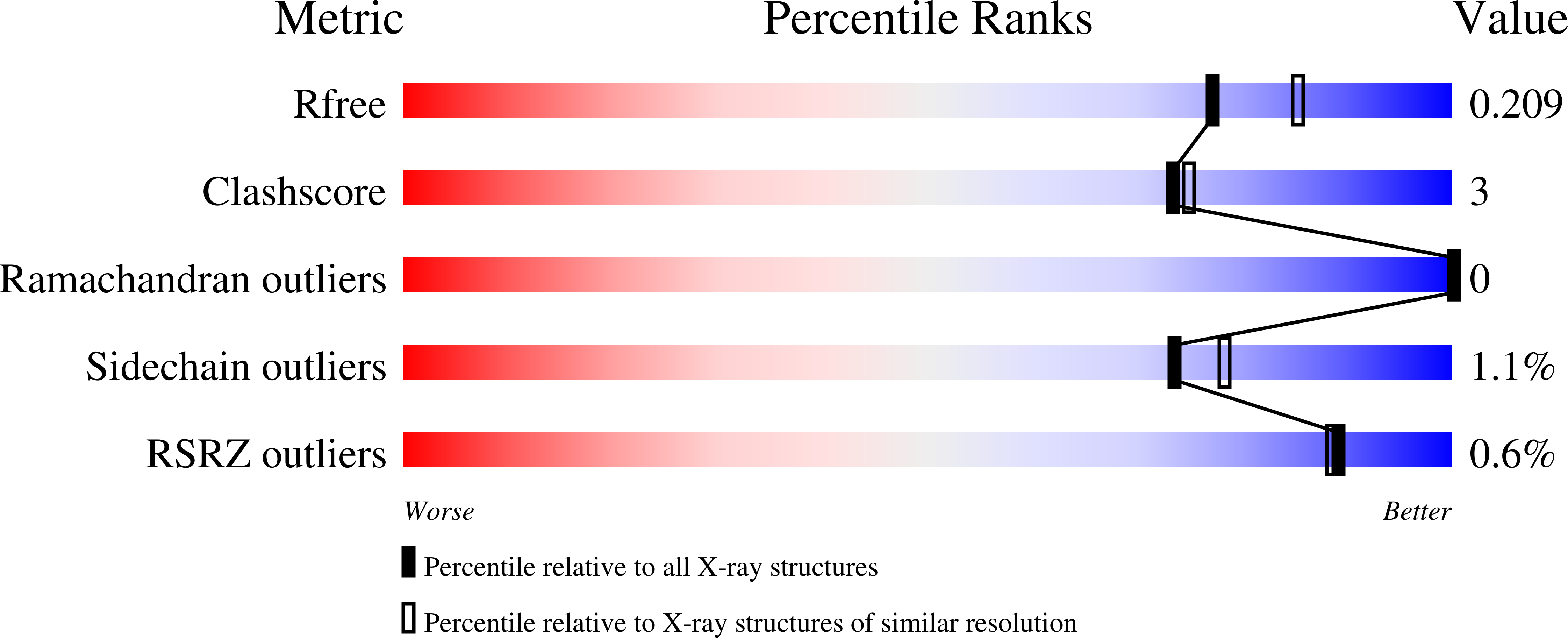Ureidopenicillins Are Potent Inhibitors of Penicillin-Binding Protein 2 from Multidrug-Resistant Neisseria gonorrhoeae H041.
Turner, J.M., Stratton, C.M., Bala, S., Cardenas Alvarez, M., Nicholas, R.A., Davies, C.(2024) ACS Infect Dis 10: 1298-1311
- PubMed: 38446051
- DOI: https://doi.org/10.1021/acsinfecdis.3c00713
- Primary Citation of Related Structures:
8VBZ, 8VEN, 8VEP, 8VEQ - PubMed Abstract:
Effective treatment of gonorrhea is threatened by the increasing prevalence of Neisseria gonorrhoeae strains resistant to the extended-spectrum cephalosporins (ESCs). Recently, we demonstrated the promise of the third-generation cephalosporin cefoperazone as an antigonococcal agent due to its rapid second-order rate of acylation against penicillin-binding protein 2 (PBP2) from the ESC-resistant strain H041 and robust antimicrobial activity against H041. Noting the presence of a ureido moiety in cefoperazone, we evaluated a subset of structurally similar ureido ¦Â-lactams, including piperacillin, azlocillin, and mezlocillin, for activity against PBP2 from H041 using biochemical and structural analyses. We found that the ureidopenicillin piperacillin has a second-order rate of acylation against PBP2 that is 12-fold higher than cefoperazone and 85-fold higher than ceftriaxone and a lower MIC against H041 than ceftriaxone. Surprisingly, the affinity of ureidopenicillins for PBP2 is minimal, indicating that their inhibitory potency is due to a higher rate of the acylation step of the reaction compared to cephalosporins. Enhanced acylation results from the combination of a penam scaffold with a 2,3-dioxopiperazine-containing R 1 group. Crystal structures show that the ureido ¦Â-lactams overcome the effects of resistance mutations present in PBP2 from H041 by eliciting conformational changes that are hindered when PBP2 interacts with the weaker inhibitor ceftriaxone. Overall, our results support the potential of piperacillin as a treatment for gonorrhea and provide a framework for the future design of ¦Â-lactams with improved activity against ESC-resistant N. gonorrhoeae .
Organizational Affiliation:
Department of Biochemistry and Molecular Biology, Medical University of South Carolina, Charleston, South Carolina 29425, United States.
















